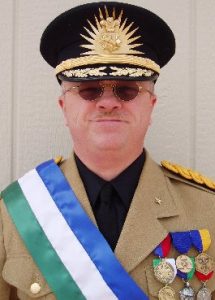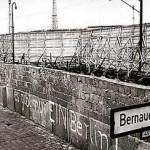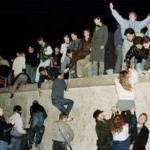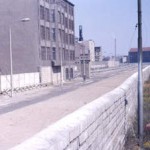east germany

 Few people know that within the United States, there lies a sovereign, independent nation, that is located in and completely surrounded by territory of the United States. The nation is called Molossian, and while this nation is not recognized by any other nation, and certainly not by the United States, its founder, Kevin Baugh, born on July 30, 1962, has declared it a nation since 1977, when he claimed it as a micronation within the United States. It is also known as the Republic if Molossia. Its headquarters is located at Kevin’s home near Dayton, Nevada. On April 16, 2016, Baugh even hosted a tour of the Republic of Molossia, sponsored by the website Atlas Obscura. Kevin Baugh continues to pay property taxes, or “foreign aid” on the land to Storey County (the recognized local government). The county lists the property identified as being within the county as Manufactured Home Converted to Real Property. Kevin Baugh has stated, “We all want to think we have our own country, but you know the U.S. is a lot bigger.”
Few people know that within the United States, there lies a sovereign, independent nation, that is located in and completely surrounded by territory of the United States. The nation is called Molossian, and while this nation is not recognized by any other nation, and certainly not by the United States, its founder, Kevin Baugh, born on July 30, 1962, has declared it a nation since 1977, when he claimed it as a micronation within the United States. It is also known as the Republic if Molossia. Its headquarters is located at Kevin’s home near Dayton, Nevada. On April 16, 2016, Baugh even hosted a tour of the Republic of Molossia, sponsored by the website Atlas Obscura. Kevin Baugh continues to pay property taxes, or “foreign aid” on the land to Storey County (the recognized local government). The county lists the property identified as being within the county as Manufactured Home Converted to Real Property. Kevin Baugh has stated, “We all want to think we have our own country, but you know the U.S. is a lot bigger.”
Molossia was a kingdom for over twenty years, followed by a People’s Democratic Republic, which then became today’s Republic in 1999 XXII. His Excellency, President Kevin Baugh is the current leader of the tiny nation. The nation encompasses a total area of 11.3 acres, Molossia is one of the smallest nations on earth, boasting just 27 citizens, but they all consider themselves citizens of Molossia for sure. A sense of humor characterizes most Molossian people, which makes sense, because you would have to have a sense of humor when you live in a nation that nobody else thinks exists. This coupled with the casual and comfortable western lifestyle, makes Molossia an enjoyable place to visit…should you ever find yourself in the area of Dayton, Nevada, about 28 miles from Reno. It is also about 28 miles from Lake Tahoe, and minutes away from Virginia City. There are some things you need to know before you decide to visit the Republic of Molossia. First, you can only visit by appointment, and upon arrival, you will have to go through customs. Another interesting fact is that the Republic of Molossia has its own currency, called the valora, which is subdivided into 100 futtrus and pegged to the relative value of Pillsbury cookie dough. Cookie dough is stored in an outbuilding called the Bank of Molossia, from which valora coins made from gambling chips and printed banknotes are sold. The Republic of Molossia also has its own Navy, Naval Academy, Space Program, Railroad, Postal Service, Bank, tourist attractions, measurement system, holidays, online movie theater, online radio station, and even its own time zone, although none of these things are recognized outside of Molossia.
The origins of Molossia come from a micronation childhood project, called The Grand Republic of Vuldstein, founded by Baugh and James Spielman on May 26, 1977, located in the same place as present day Molossia. Vuldstein was run and populated by King James I (Spielman), and Prime Minister (Baugh), although Spielman soon left “Vuldstein” and moved elsewhere, and more likely outgrew the childhood fantasy. Baugh used this name for several nomadic kingdoms as he traveled to Europe. From 1998 to 1999, Molossia was a member of the United Provinces of Utopia 3. On September 3, 1999, Baugh created the Republic of Molossia as a successor country to Vuldstein, and declared himself president. On November 13, 2012, Kevin Baugh created a petition on the Whitehouse.gov We the People website to obtain official recognition of his micronation. He declared that at the last census, held on March 18, 2012, 27 inhabitants lived in Molossia. It is the Baugh family’s primary place of residence, and the site of Molossia’s designated capital, Baughston. Baughston was renamed from Espera on 30 July 2013 to commemorate President Baugh’s 51st birthday. And true to any sovereign nation, the Republic of Molossia claims to be at war with East Germany. What is a nation without a war? The Republic of Molossia alleges that East Germany is responsible for military drills performed by Kevin 
 Baugh while stationed with the United States Military in West Germany, and therefore are also responsible for the resulting lack of sleep. While East Germany formally ceased to exist in 1991 via the Treaty on the Final Settlement with Respect to Germany, Molossia argues that “Ernst Thälmann Island, through dedication by Cuba to Weimar German politician Ernst Thälmann and lack of mention in the Treaty on the Final Settlement or by the nation of Cuba either, is still East German land, allowing the war to continue.” I can’t say why Baugh believes that he can have a sovereign nation within the borders of an already sovereign nation, but apparently he does.
Baugh while stationed with the United States Military in West Germany, and therefore are also responsible for the resulting lack of sleep. While East Germany formally ceased to exist in 1991 via the Treaty on the Final Settlement with Respect to Germany, Molossia argues that “Ernst Thälmann Island, through dedication by Cuba to Weimar German politician Ernst Thälmann and lack of mention in the Treaty on the Final Settlement or by the nation of Cuba either, is still East German land, allowing the war to continue.” I can’t say why Baugh believes that he can have a sovereign nation within the borders of an already sovereign nation, but apparently he does.

 On August 13, 1961, in the hours just after midnight, the East German soldiers began laying down barbed wire and bricks as a barrier between Soviet-controlled East Berlin and the democratic western section of the city. It was a day that would change life in Berlin for the next twenty eight years. In the days that followed, a wall was built to permanently close off access to the west. The citizens of East Berlin became prisoners in their own homes and city, in a prison that was built around them. The road between East and West Berlin had become a one way street. If you wanted in, you couldn’t come back out. Families were separated from each other, and those in the West had to make the choice to go be with family in East Berlin…and captivity, or not. The wall became the symbol of the Cold War. It was a literal Iron Curtain, dividing Europe.
On August 13, 1961, in the hours just after midnight, the East German soldiers began laying down barbed wire and bricks as a barrier between Soviet-controlled East Berlin and the democratic western section of the city. It was a day that would change life in Berlin for the next twenty eight years. In the days that followed, a wall was built to permanently close off access to the west. The citizens of East Berlin became prisoners in their own homes and city, in a prison that was built around them. The road between East and West Berlin had become a one way street. If you wanted in, you couldn’t come back out. Families were separated from each other, and those in the West had to make the choice to go be with family in East Berlin…and captivity, or not. The wall became the symbol of the Cold War. It was a literal Iron Curtain, dividing Europe.
When World War II ended in 1945, Germany was divided into four Allied occupation zones. Berlin, the German capital, was likewise divided into occupation sectors, even though it was located deep within the Soviet occupation zone. The future of Germany was a source of contention. Disagreements brought tensions which grew when the United States, Britain, and France moved in 1948 to unite their occupation zones into a single autonomous entity known as the Federal Republic of Germany or West Germany. In response, the Soviet Union launched a land blockage of West Berlin in an effort to force the West to abandon the city. The United States and Britain responded with a massive airlift of food and supplies to West Berlin, and in May of 1949, the Soviet Union ended the blockade in defeat.
That didn’t remove the tensions that plagued the area, however. By 1961 the Cold War tensions were running high again. The East German people became very dissatisfied with life under the communist system. West Berlin was a gateway to the West and Democracy. Between 1949 and 1961, about 2.5 million East Germans fled East Berlin to West Germany. By August of 1961, East Germans were crossing into West Germany at a rate of 2,000 people per day. Many of the refugees were skilled laborers, professionals, and intellectuals, and their loss was having a devastating effect on the East German economy. The Soviets had to figure out a way to stop the exodus, and its devastating effect on the economy. Soviet leader Nikita Khruschev made the decision to close off access from East Berlin to West Berlin.
Then came the night of August 13, 1961. The citizens of East Berlin could no longer freely pass into West Berlin. The West was taken by surprise, and threatened a trade embargo against East Germany as a retaliatory measure. The Soviets responded that such a measure would bring new blockades. The West did nothing, and the East German authorities grew more and more bold. They began closing of more and more checkpoints between East and West Berlin. On August 15, they began replacing barbed wire with concrete. The wall was supposedly designed protect their citizens from the influence of decadent capitalist culture. In realty, it protected the East German authorities from scrutiny as they did what they wanted with out retaliation.
Once it was up, the only way for East Berliners to escape the oppression of their government was to take their chances to get across in whatever way they could dream up. People attempted escape by train, tight rope, zip lines, hot air balloons, through old tunnels, impersonating soldiers, a stolen tank, and swimming. Many of these attempts ended in death for the person attempting escape. It didn’t stop them. They were so determined to live freely. About 5,000 East Germans managed to escape across the Berlin Wall to the West, but the frequency of successful escapes dwindled as the wall was increasingly fortified. Thousands of East Germans were captured during attempted crossings and 191 were killed.
On June 12, 1987 President Reagan made his great “tear down this wall” speech, but the wall remained until 
 1989, when the democratization movement began sweeping across Eastern Europe. On November 9, 1989 travel restrictions were eased. Jubilant Berliners climbed on top of the Berlin Wall, painted graffiti on it, and removed fragments as souvenirs. The next day, East German troops began dismantling the wall. In 1990, East and West Germany were formally reunited. For those in the free world, it would be almost impossible to completely understand just what Communism was like, but those who lived it, would never forget it, if they even lived through it, which many didn’t.
1989, when the democratization movement began sweeping across Eastern Europe. On November 9, 1989 travel restrictions were eased. Jubilant Berliners climbed on top of the Berlin Wall, painted graffiti on it, and removed fragments as souvenirs. The next day, East German troops began dismantling the wall. In 1990, East and West Germany were formally reunited. For those in the free world, it would be almost impossible to completely understand just what Communism was like, but those who lived it, would never forget it, if they even lived through it, which many didn’t.

